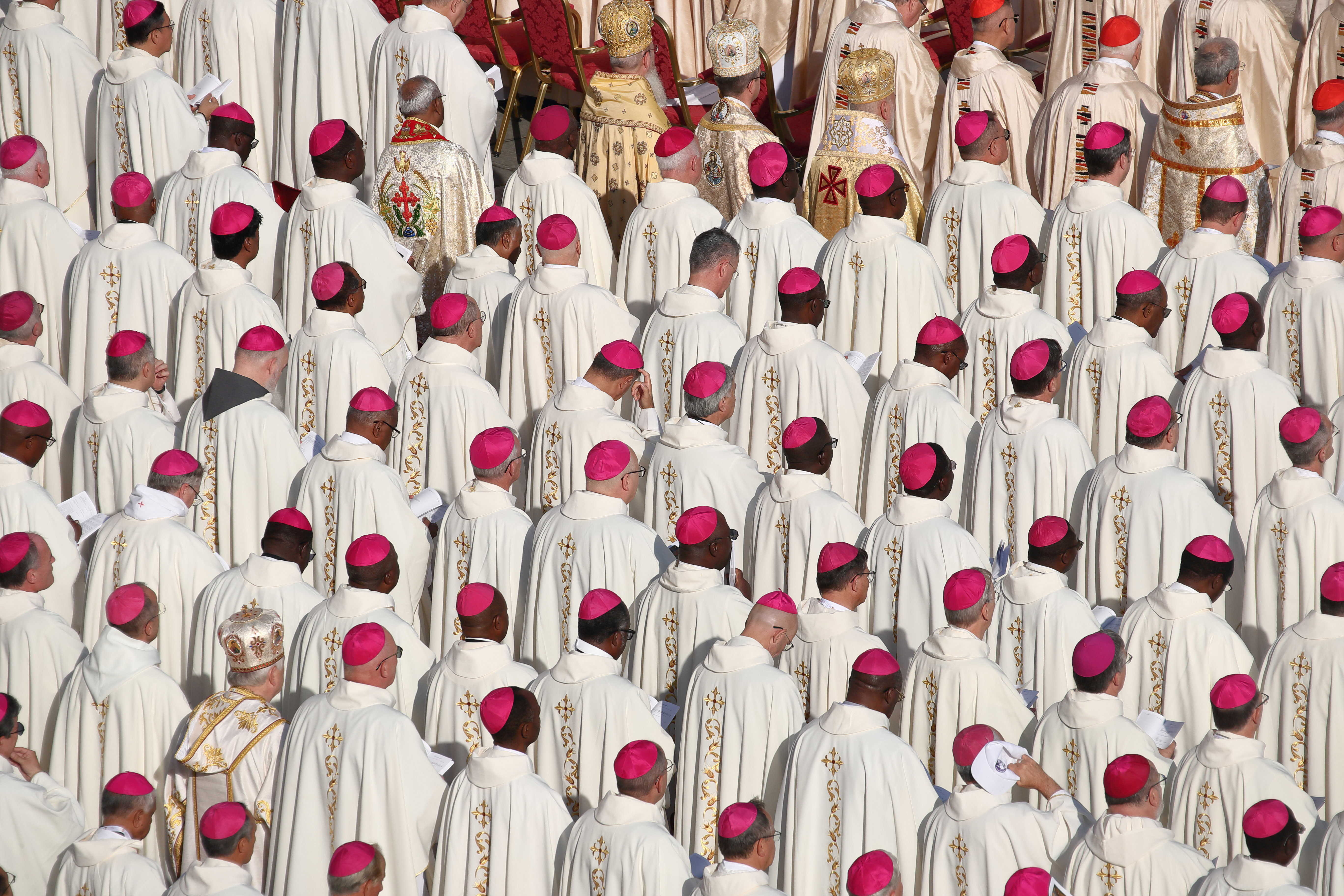How Many Cardinals Vote? Papal Conclave Explained
Who Elects the Pope? Decoding the Papal Conclave
Introduction: When a Pope's Reign Ends
The papacy, the spiritual leadership of the Catholic Church, is a position held until death or resignation. It’s a lifelong commitment, but what happens when a pope’s time is up? That's when things get really interesting! A series of intricate rites and rituals kick in, governing what's known as the "interregnum" – the period between the end of one pontificate and the start of another. Think of it like a relay race, where the baton is the authority of the Church, and the world waits with bated breath to see who picks it up next.
The "Sede Vacante": An Empty Seat
This period, called the “sede vacante,” or “empty See,” is a unique time in the Church. The papal throne is vacant, and the usual rules are temporarily suspended. But don't worry, it's not a free-for-all! The Church has a plan.
The Camerlengo's Role
During the "sede vacante," the camerlengo, or chamberlain, takes charge of the Holy See's administration and finances. He's like the interim CEO, making sure things run smoothly until a new pope is chosen. He officially certifies the pope’s death, seals the papal apartments (think of it as locking up the office), and prepares for the pope’s burial. The current camerlengo is Cardinal Kevin Farrell, the head of the Vatican’s laity office. But here’s the catch: if the Pope is just sick, the camerlengo doesn’t step in. It’s only when the seat is truly vacant.
The Dean of the College of Cardinals
Similarly, the dean of the College of Cardinals has a specific role. He presides at the papal funeral and organizes the conclave, the meeting where the new pope is elected. But again, this role only comes into play after the pope's death or resignation. Currently, Italian Cardinal Giovanni Battista Re holds this position.
Who Gets to Vote? Understanding the College of Cardinals
So, who actually gets to choose the next leader of the Catholic Church? The answer lies with the College of Cardinals. But it's not quite as simple as just having a red hat. Think of it as an exclusive club with very specific membership requirements.
The Age Limit: 80 and Out
There's a crucial age limit. Only cardinals under the age of 80 at the time the papacy becomes vacant are eligible to vote in the conclave. Once they hit 80, they become Cardinal Emeritus, enjoying the prestige and honor but no longer having a say in electing the next pope. This rule ensures that the electors are of sound mind and body, capable of handling the demanding task of choosing a new leader.
The Current Landscape: How Many Eligible Cardinals Are There?
The number of eligible cardinal electors fluctuates as cardinals age or pass away. It's a dynamic situation that keeps Vatican watchers on their toes. To get the most up-to-date figure, it's best to check reputable sources like the Vatican News website or other reliable Catholic news outlets. They will have the most current and accurate information.
The Conclave: Locked Away for a Sacred Duty
The conclave is perhaps the most fascinating aspect of the papal election process. It’s a secretive and solemn gathering, shrouded in tradition and ritual. The word "conclave" itself comes from the Latin "cum clave," meaning "with a key." This refers to the fact that the cardinals are literally locked away until they reach a decision.
Secrecy and Isolation: Protecting the Process
The cardinals are sequestered in the Sistine Chapel, cut off from the outside world. No phones, no internet, no newspapers – nothing that could influence their decision. This isolation is designed to ensure that they vote according to their conscience, free from external pressures or political maneuvering. It's like they're entering a spiritual retreat, focused solely on choosing the best person to lead the Church.
The Voting Process: Ballots and Prayers
The voting process is equally ritualistic. The cardinals cast their ballots in secret, writing the name of their chosen candidate on a slip of paper. The ballots are then collected and counted. A two-thirds majority is required to elect a new pope. If no one reaches that threshold, they burn the ballots. And that leads us to….
Black Smoke vs. White Smoke: Signaling the Outcome
Perhaps the most iconic image of a papal conclave is the smoke billowing from the Sistine Chapel chimney. Black smoke signals that no decision has been reached, while white smoke indicates that a new pope has been elected. The world watches with anticipation, waiting for that puff of white smoke that signifies the end of the "sede vacante." Imagine the collective sigh of relief and the explosion of joy when the white smoke finally appears!
The Role of the Holy Spirit
While the conclave is a structured process, faith plays a central role. The cardinals believe they are guided by the Holy Spirit in their decision-making. Prayers and solemn ceremonies permeate the entire conclave, invoking divine guidance in the selection of the next pope. It’s a blend of human effort and divine inspiration.
Beyond the Vote: What Happens After Election?
What happens after the cardinals finally agree on a new pope? The elected cardinal is asked if he accepts the office. If he says yes, he chooses his papal name, and the world is introduced to the new leader of the Catholic Church.
"Habemus Papam!": Announcing the New Pope
The announcement of the new pope is a momentous occasion. The cardinal protodeacon (the senior cardinal deacon) appears on the balcony of St. Peter's Basilica and proclaims "Habemus Papam!" – "We have a Pope!" He then announces the new pope's chosen name. The new pope then appears to give his first blessing to the crowds gathered in St. Peter's Square and the world beyond.
Influence and Politics: Are Elections Ever Biased?
While the goal of the conclave is to elect a pope based on spiritual merit, let's be real: human nature is always a factor. Cardinals may have their own preferences and priorities, and different factions may emerge within the College. While overt campaigning is discouraged, informal discussions and networking undoubtedly take place. However, the overarching goal is always to choose the best leader for the Church, even if opinions on who that is can vary widely. Is it a pure and unadulterated process? Probably not. Is it a sincere effort to discern God's will? Most likely, yes.
Can the Rules Change? The Pope's Power to Modify
Here's an interesting twist: the pope has the authority to modify the rules governing the conclave. He can issue decrees that alter the voting procedures, the eligibility requirements, or any other aspect of the process. This power allows the pope to adapt the conclave to the changing needs of the Church and the world.
The Future of the Conclave: Modern Challenges
As the world changes, the conclave faces new challenges. How can the Church ensure the integrity and security of the process in the age of cyber threats and social media? How can it balance the need for secrecy with the desire for transparency? These are questions that the Church will continue to grapple with as it prepares for future papal elections.
Conclusion: A Legacy of Tradition and Faith
The papal conclave is a unique and fascinating process, steeped in tradition and guided by faith. It's a reminder of the enduring power of the Catholic Church and its commitment to choosing a leader who will guide its flock through challenging times. From the locked doors of the Sistine Chapel to the puff of white smoke, the conclave is a spectacle that captivates the world. So, the next time you hear about a pope's passing, remember the intricate process that unfolds, and the sacred duty of the cardinals locked away, seeking divine guidance in choosing the next leader of the Catholic Church.
Frequently Asked Questions (FAQs)
Here are some common questions about the papal conclave:
- Q: What happens if there's a tie in the voting?
A: Tying is impossible, since a two-thirds majority is required to win. There is a process for repeated inconclusive ballots. Typically, after a certain number of ballots, the cardinals may decide to hold a runoff election between the two candidates who received the most votes in the previous rounds. The candidates themselves are not eligible to vote in the runoff.
- Q: Can a non-cardinal be elected pope?
A: Technically, yes. Any baptized male Catholic is eligible to be elected pope. However, in practice, the cardinals always elect one of their own. The elected individual must then be ordained as a bishop before formally assuming the papacy.
- Q: How long does a conclave typically last?
A: There's no set time limit. Some conclaves have lasted only a few days, while others have gone on for weeks. The length depends on how quickly the cardinals can reach a consensus. The 2013 conclave, which elected Pope Francis, lasted just two days.
- Q: What safeguards are in place to prevent outside interference in the conclave?
A: Strict measures are taken to prevent outside influence. The cardinals are sequestered, and communication with the outside world is prohibited. Electronic devices are banned, and the Sistine Chapel is swept for surveillance equipment. The cardinals also take an oath of secrecy, promising not to reveal anything about the proceedings.
- Q: Can a pope resign?
A: Yes, a pope can resign. It's a rare occurrence, but it is permitted under canon law. Pope Benedict XVI's resignation in 2013 was the first papal resignation in nearly 600 years.

